
Introduction to Social Media Marketing
Social media marketing is essential for businesses today. It helps you connect with your audience, build your brand, and drive sales. With billions of users online, social platforms offer a huge opportunity for growth. You can reach your target customers where they spend their time.
In this article, we will explore different social media marketing packages. We’ll look at what’s included in each package and how you can choose the right one for your business needs. If you want to improve your online presence and engage more effectively with your audience, read on to discover how social media marketing can help you succeed.
Types of Social Media Marketing Packages
When it comes to social media marketing, choosing the right package is crucial for your business’s success. Different packages cater to various needs and budgets, allowing you to select the one that best fits your goals. Here’s a breakdown of the most common types of social media marketing packages:
1. Basic Package
The basic package is perfect for small businesses or startups. It usually includes essential services like account setup, content posting, and basic engagement monitoring. This package helps you establish your presence on one or two social media platforms, making it a cost-effective option for those just starting out.
2. Standard Package
If your business is ready to take the next step, the standard package offers more comprehensive services. This typically includes everything in the basic package, plus enhanced content creation, targeted advertising, and regular performance reports. You can expect a more significant focus on engagement and community management, helping you connect with your audience on a deeper level.
3. Premium Package
For businesses aiming for maximum impact, the premium package is the way to go. It includes advanced features like custom strategy development, daily monitoring, and extensive advertising campaigns across multiple platforms. This package is ideal for larger companies or those with ambitious marketing goals. You’ll receive personalised support and in-depth analytics to track your progress and optimise your efforts.
4. Custom Packages
If your needs don’t fit neatly into the standard offerings, consider a custom package. This allows you to tailor your social media marketing strategy based on your specific goals, budget, and audience. You can choose the services you want, whether it’s content creation, paid ads, or influencer partnerships. A custom approach ensures you get exactly what you need without paying for extras you don’t.
5. Industry-Specific Packages
Some agencies offer packages designed specifically for certain industries, like retail, healthcare, or tech. These packages often include tailored strategies and content that resonate with your target audience. By choosing an industry-specific package, you can benefit from insights and tactics that have proven successful in your field.
Selecting the right social media marketing package is vital for achieving your business goals. Each type of package offers unique benefits, so it’s essential to evaluate what aligns best with your needs. Whether you’re just starting or looking to scale your efforts, there’s a package that can help you thrive in the digital landscape.
Customizable Packages and Pricing
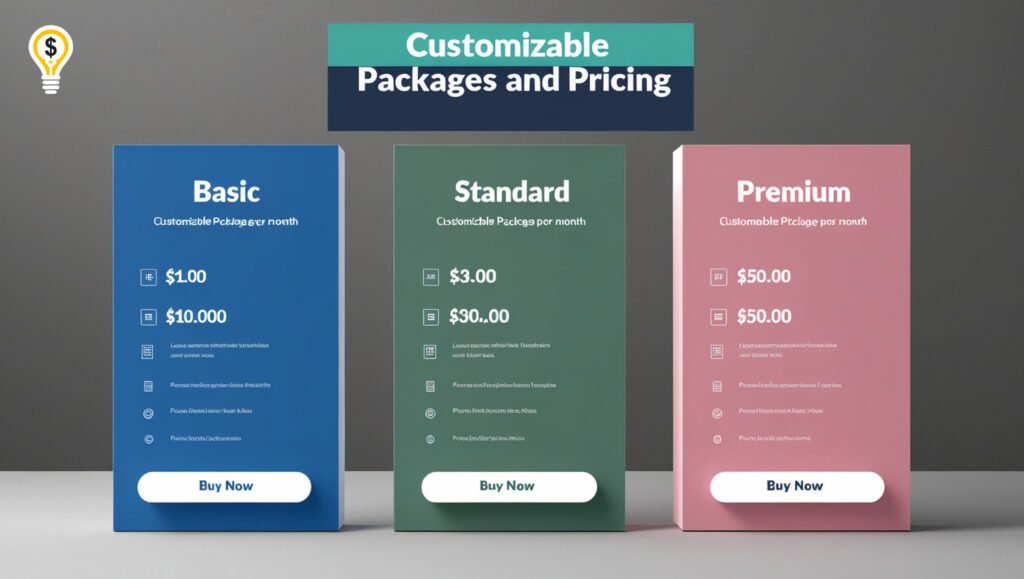
In today’s dynamic digital landscape, a one-size-fits-all approach to social media marketing often falls short. Customizable packages allow you to tailor your marketing strategy to meet your unique business needs, budget, and objectives. Here’s a closer look at how these packages work and what you should consider when choosing one.
1. Understanding Custom Packages
Custom packages are designed to provide flexibility. Instead of selecting from fixed options, you can pick and choose the services that matter most to your business. This might include a combination of content creation, social media management, targeted advertising, and analytics reporting. By personalising your package, you ensure that every dollar spent contributes to your specific goals.
2. Key Components to Customise
When considering a custom package, think about the following components:
· Social Media Platforms: Decide which platforms align best with your audience. Whether it’s Facebook, Instagram, LinkedIn, or Twitter, each platform has its strengths.
· Content Strategy: Choose the type of content that resonates with your audience. This could include images, videos, blog posts, or user-generated content.
· Advertising Options: Determine your budget for paid ads. Custom packages can include various ad formats, such as sponsored posts, stories, or carousel ads, tailored to your goals.
· Engagement Tactics: Consider how you want to interact with your audience. Options might include responding to comments, running contests, or collaborating with influencers.
· Reporting and Analytics: Decide how often you want to receive performance reports. Custom packages can range from weekly updates to monthly deep dives, depending on your needs.
3. Pricing Structure
The pricing for customizable packages varies based on the services included and the level of expertise required. Here are a few common pricing structures:
· Hourly Rate: Some agencies charge an hourly rate for specific services, allowing you to pay for exactly what you need.
· Monthly Retainer: A fixed monthly fee can cover a set range of services, providing a predictable budget while allowing for ongoing support.
· Project-Based Pricing: For specific campaigns or one-time projects, agencies may offer a project-based pricing model, which can be beneficial for short-term initiatives.
4. Benefits of Custom Packages
· Tailored Solutions: You can focus on what works best for your audience, ensuring that your marketing efforts are relevant and effective.
· Cost Efficiency: By selecting only the services you need, you can avoid overspending on unnecessary features.
· Scalability: As your business grows, you can easily adjust your package to include more services or shift focus to new platforms.
5. Choosing the Right Custom Package
To select the best custom package for your needs, consider the following steps:
· Assess Your Goals: Clearly define what you want to achieve with your social media marketing, whether it’s brand awareness, lead generation, or customer engagement.
· Research Providers: Look for agencies that specialise in customizable packages. Read reviews and ask for case studies to gauge their effectiveness.
· Consultation: Many agencies offer free consultations to discuss your needs. Use this opportunity to ask questions and get a feel for their approach.
· Trial Period: If possible, start with a trial period to evaluate the agency’s performance before committing to a long-term contract.
Customizable packages offer a tailored approach to social media marketing that can significantly enhance your strategy. By selecting the right components and pricing structure, you can create a marketing plan that aligns with your unique business needs and goals. With the right package in place, you’ll be better positioned to connect with your audience and drive meaningful results.
Key Components of Effective SMM Packages
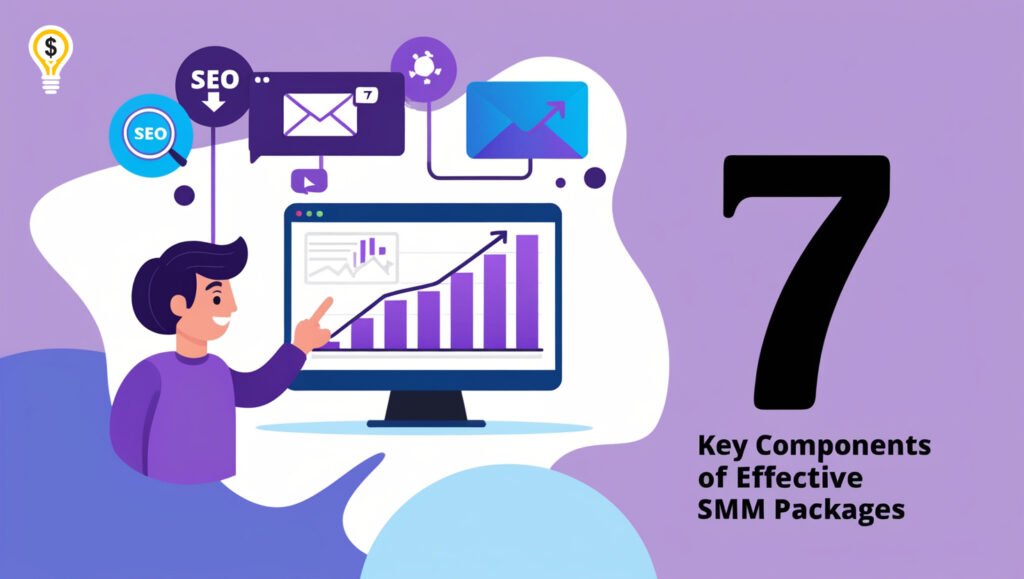
A successful social media marketing (SMM) package comprises several key components that work together to achieve your business goals. Understanding these elements will help you choose the right package and ensure that your social media efforts are effective and impactful. Here’s a detailed look at the essential components of effective SMM packages:
1. Strategy Development
Every effective SMM package begins with a solid strategy. This involves researching your target audience, understanding their preferences, and identifying the best platforms for engagement. A well-defined strategy outlines your goals—whether it’s increasing brand awareness, generating leads, or fostering customer loyalty. It should also include a content calendar, detailing what and when to post.
2. Content Creation
High-quality content is the backbone of any social media marketing effort. Effective packages should include various types of content tailored to your audience and platform. This may involve:
- Visual Content: Eye-catching images, graphics, and videos that grab attention and encourage sharing.
- Written Content: Engaging captions, blog posts, and articles that provide value and drive traffic to your website.
- User-Generated Content: Encouraging your audience to share their experiences with your brand, which can enhance authenticity and trust.
3. Social Media Management
Active management of your social media accounts is crucial for maintaining engagement. This includes:
- Posting Schedule: Regularly scheduled posts to keep your audience engaged and informed.
- Community Engagement: Responding to comments, messages, and reviews in a timely manner to build relationships and trust.
- Monitoring Trends: Staying updated on social media trends and adjusting your strategy accordingly to remain relevant.
4. Targeted Advertising
To reach a broader audience and achieve specific goals, targeted advertising is essential. An effective SMM package should include:
- Ad Creation: Designing compelling ads that resonate with your audience.
- Audience Targeting: Utilising demographic, geographic, and behavioural data to reach the right people.
- Budget Management: Setting and adjusting your advertising budget to maximise return on investment (ROI).
5. Analytics and Reporting
Measuring the effectiveness of your social media efforts is vital for ongoing success. A robust SMM package should include:
- Performance Metrics: Tracking key performance indicators (KPIs) such as engagement rates, reach, conversions, and follower growth.
- Regular Reporting: Providing detailed reports that summarise performance, highlight successes, and identify areas for improvement.
- Strategy Adjustments: Using data insights to tweak your strategy and optimise future campaigns for better results.
6. Training and Support
For businesses that want to manage their own social media efforts, some packages include training and support. This might involve:
- Workshops: Offering training sessions on best practices for social media management.
- Consultation Services: Providing ongoing support to help you navigate challenges and make informed decisions.
7. Crisis Management
An effective SMM package should also include plans for managing potential crises. This involves:
- Monitoring for Issues: Keeping an eye on comments and reviews that could escalate into larger problems.
- Response Protocols: Having a clear plan for addressing negative feedback or crises in a timely and professional manner.
Social Media Platforms and Their Benefits
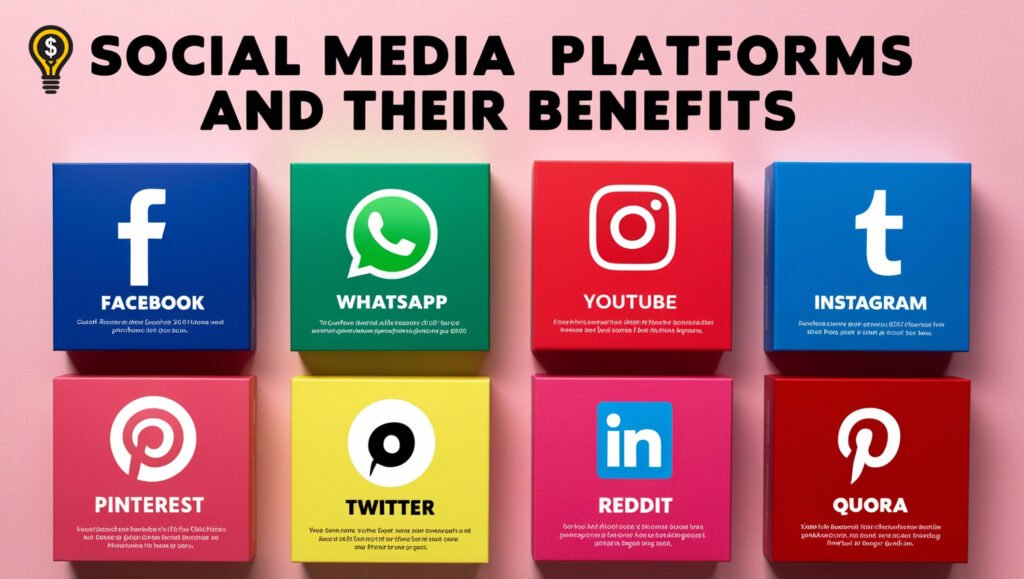
Selecting the right social media platforms is a critical aspect of any social media marketing strategy. Each platform has its unique features, audience demographics, and advantages that can help you achieve your business goals. Here’s a detailed overview of some of the most popular social media platforms and the benefits they offer:
1. Facebook
- Audience Reach: With over 2.9 billion active users, Facebook provides access to a vast audience across diverse demographics.
- Advertising Options: Facebook offers robust advertising tools, allowing precise targeting based on user behaviour, interests, and location.
- Community Building: The platform enables brands to create groups and pages, fostering community engagement and direct interaction with followers.
- Content Variety: You can share a mix of content types, including text posts, images, videos, and live streams.
2. Instagram
- Visual Appeal: Instagram is a highly visual platform, making it ideal for brands with strong visual content, such as fashion, food, or travel.
- Stories and Reels: The use of Stories and Reels allows for creative, short-form content that can engage users and increase brand visibility.
- Influencer Collaborations: Instagram is a hub for influencer marketing, offering opportunities to partner with influencers who can amplify your brand’s reach.
- Shopping Features: With shoppable posts and Instagram Shop, businesses can drive sales directly through the platform.
3. LinkedIn
- Professional Networking: LinkedIn is tailored for B2B marketing and professional networking, making it ideal for companies targeting other businesses.
- Thought Leadership: The platform is a great space for sharing industry insights, articles, and case studies, positioning your brand as a thought leader.
- Job Recruiting: If your business is looking to hire, LinkedIn provides a platform to share job postings and connect with potential candidates.
- Targeted Advertising: LinkedIn allows for precise targeting based on job title, industry, and company size, helping you reach decision-makers.
4. Twitter
- Real-Time Engagement: Twitter is designed for real-time conversation, making it ideal for brands looking to engage with customers instantly and participate in trending discussions.
- Concise Messaging: The character limit encourages concise, impactful messaging, perfect for quick updates and announcements.
- Hashtag Usage: Using hashtags effectively can expand your reach and visibility, connecting you with broader conversations and topics.
- Customer Service: Many users turn to Twitter for customer support, providing an opportunity for brands to address issues and enhance customer satisfaction quickly.
5. YouTube
- Video Content Dominance: YouTube is the largest video platform, ideal for brands looking to share tutorials, product reviews, and engaging storytelling.
- SEO Benefits: Videos on YouTube can rank in Google search results, enhancing your brand’s visibility online.
- Ad Revenue Potential: Brands can monetize their videos or collaborate with YouTube creators for influencer marketing campaigns.
- Community Engagement: YouTube allows for direct interaction with viewers through comments and live streams, fostering community and loyalty.
6. TikTok
- Viral Potential: TikTok’s algorithm favours creative and engaging content, providing opportunities for brands to go viral and reach a younger audience.
- Short-Form Content: The platform thrives on short, impactful videos, making it ideal for quick storytelling and brand promotion.
- Trends and Challenges: Participating in viral trends and challenges can enhance brand visibility and relevance among users.
- Creative Expression: TikTok encourages creativity, allowing brands to experiment with fun and unique content formats.
7. Pinterest
- Visual Discovery: Pinterest is a visual search engine that allows users to discover and save ideas, making it great for brands in industries like home decor, fashion, and food.
- Long-Term Engagement: Pins can drive traffic over time, as users save and revisit content, leading to ongoing engagement with your brand.
- Shopping Integration: Pinterest offers shopping features, allowing users to purchase products directly from the platform.
- Demographic Targeting: The platform has a strong female user base, making it ideal for brands targeting women-centric markets.
Each social media platform offers distinct advantages that can help you achieve your marketing objectives. By understanding the unique features and audience demographics of each platform, you can tailor your social media strategy to maximise engagement and drive results. Choosing the right platforms is essential for connecting with your audience effectively and enhancing your overall social media marketing efforts.
Targeted Advertising Solutions

Targeted advertising is a powerful component of social media marketing that enables businesses to reach their ideal audience effectively. By using data and insights, targeted advertising ensures that your marketing messages are delivered to the right people at the right time. Here’s an in-depth look at targeted advertising solutions and how they can benefit your business:
1. Understanding Targeted Advertising
Targeted advertising involves creating ads that are tailored to specific audience segments based on various factors such as demographics, interests, behaviours, and location. This approach allows you to maximise your ad spend by ensuring that your ads reach users who are most likely to engage with your brand.
2. Key Benefits of Targeted Advertising
- Increased Relevance: Ads are more relevant to users when they align with their interests and behaviours. This relevance leads to higher engagement rates and better conversion.
- Cost Efficiency: By targeting a specific audience, you can reduce waste in your advertising budget, focusing only on users who are likely to convert.
- Improved ROI: With precise targeting, businesses can achieve a higher return on investment as ads reach the most promising leads, enhancing the effectiveness of campaigns.
- Enhanced Brand Awareness: Targeted ads help increase brand visibility among potential customers, leading to more followers and increased interest in your products or services.
3. Types of Targeting Options
Social media platforms offer various targeting options to help you refine your audience. Here are some common methods:
· Demographic Targeting: This allows you to target users based on age, gender, income level, education, and more. This is particularly useful for businesses with specific audience profiles.
· Interest Targeting: Platforms can analyse user behaviour to identify interests. You can target users based on hobbies, preferences, and activities they engage in online.
· Behavioural Targeting: This method uses data about user interactions and behaviours—such as past purchases or browsing habits—to target ads. It helps in reaching users who have shown intent or interest in your products.
· Geographic Targeting: You can tailor your ads to users in specific locations, whether at a local, regional, or national level. This is especially beneficial for businesses with physical locations or those offering location-based services.
· Retargeting: Retargeting ads are shown to users who have previously interacted with your website or social media. This keeps your brand top-of-mind and encourages return visits or conversions.
4. Ad Formats and Creative Strategies
Different platforms offer various ad formats to capture user attention. Here are some popular formats to consider:
· Image Ads: Simple yet effective, image ads use eye-catching visuals to convey your message quickly.
· Video Ads: Video content tends to engage users more effectively. Short, compelling videos can tell your brand story or showcase products in action.
· Carousel Ads: This format allows users to swipe through multiple images or videos, providing a more interactive experience. It’s great for showcasing a range of products or services.
· Story Ads: Platforms like Instagram and Facebook allow businesses to create full-screen ads that appear between users’ stories, providing a more immersive experience.
· Sponsored Posts: These are regular posts that are boosted to reach a wider audience. They can include any type of content, making them versatile for different marketing messages.
5. Measuring Success
To ensure your targeted advertising efforts are effective, it’s crucial to track and analyse key performance metrics. Here are some important metrics to monitor:
· Click-Through Rate (CTR): This measures how many users clicked on your ad compared to how many saw it. A high CTR indicates that your ad is engaging and relevant.
· Conversion Rate: This shows the percentage of users who completed a desired action after clicking on your ad, such as making a purchase or signing up for a newsletter.
· Cost Per Click (CPC): This metric helps you understand how much you are paying for each click on your ad. Lower CPC indicates a more cost-effective campaign.
· Return on Ad Spend (ROAS): This measures the revenue generated for every dollar spent on advertising. A higher ROAS signifies a successful campaign.
Targeted advertising solutions are essential for maximising the impact of your social media marketing efforts. By understanding and utilising the various targeting options, ad formats, and measurement strategies, you can effectively reach your desired audience and achieve your business goals. Embracing targeted advertising not only enhances engagement but also drives conversions, making it a vital component of your overall marketing strategy.
Custom Social Media Strategies

Creating a custom social media strategy is vital for businesses looking to enhance their online presence and achieve specific marketing goals. A well-crafted strategy helps you engage with your audience more effectively and ensures that your efforts are aligned with your overall business objectives. Here’s a detailed look at the essential components of a custom social media strategy:
1. Setting Clear Objectives
The first step in developing a custom social media strategy is to define clear, measurable objectives. These could include:
- Brand Awareness: Increasing your brand’s visibility among your target audience.
- Lead Generation: Attracting potential customers and capturing their information for future marketing.
- Customer Engagement: Building relationships and encouraging interaction with your audience.
- Sales Growth: Driving direct sales through social media promotions and advertising.
Setting specific goals provides direction and helps you measure the success of your efforts.
2. Identifying Your Target Audience
Understanding your audience is crucial for crafting relevant content and messaging. Start by:
- Creating Buyer Personas: Develop detailed profiles of your ideal customers, including demographics, interests, pain points, and online behaviours.
- Conducting Audience Research: Use tools like surveys, social media analytics, and market research to gather insights about your audience’s preferences and habits.
- Segmenting Your Audience: Divide your audience into different segments based on shared characteristics, which allows for more tailored messaging.
3. Choosing the Right Platforms
Not all social media platforms will be suitable for your business. Consider the following when selecting platforms:
- Audience Presence: Research where your target audience spends their time. For example, younger demographics may prefer TikTok or Instagram, while professionals may gravitate toward LinkedIn.
- Content Type: Different platforms support various content types. Visual content works well on Instagram, while longer articles may be more appropriate for LinkedIn.
- Engagement Potential: Evaluate the platforms’ features for community engagement, such as comments, shares, and interactions.
4. Content Planning and Creation
A successful social media strategy hinges on consistent, high-quality content. Focus on:
- Content Calendar: Develop a calendar that outlines what content will be posted, when, and on which platforms. This helps maintain consistency and ensures timely messaging.
- Content Types: Diversify your content mix to include images, videos, blogs, infographics, and live streams. Different formats can engage your audience in various ways.
- Brand Voice and Messaging: Establish a consistent brand voice that resonates with your audience. Your messaging should reflect your brand values and mission.
5. Engagement Strategies
Building relationships with your audience is key to social media success. Consider these strategies:
- Active Community Management: Respond promptly to comments and messages, and engage with users’ content to foster a sense of community.
- User-Generated Content: Encourage your audience to share their experiences with your brand. This not only enhances engagement but also builds trust and authenticity.
- Contests and Giveaways: Run interactive campaigns that encourage participation and sharing, increasing your brand’s visibility.
6. Advertising and Promotions
Incorporating paid advertising can amplify your reach and engagement. When planning ads:
- Define Your Budget: Establish a clear budget for advertising campaigns, ensuring that it aligns with your overall marketing goals.
- Create Compelling Ads: Develop visually appealing and persuasive ads that resonate with your target audience. Use strong calls to action (CTAs) to drive engagement.
- Test and Optimise: Experiment with different ad formats, targeting options, and messaging to determine what performs best. Use A/B testing to refine your approach.
7. Monitoring and Analytics
Tracking the performance of your strategy is essential for ongoing improvement. Focus on:
- Key Performance Indicators (KPIs): Identify the metrics that matter most to your goals, such as engagement rates, follower growth, and conversion rates.
- Regular Reporting: Create regular reports to assess the effectiveness of your strategy. Analyse what works and what doesn’t, and adjust your approach accordingly.
- Feedback Loop: Encourage feedback from your audience to gain insights into their preferences and perceptions, helping you refine your strategy over time.
A custom social media strategy is essential for maximising your marketing efforts and achieving your business objectives. By setting clear goals, understanding your audience, and creating engaging content, you can effectively connect with your audience and drive results. Continuous monitoring and optimization will ensure your strategy remains relevant and effective, allowing you to adapt to changing trends and consumer behaviours in the ever-evolving social media landscape.
Measuring Success in Social Media Marketing

Measuring the success of your social media marketing efforts is crucial for understanding the effectiveness of your strategy and making informed decisions moving forward. By tracking key performance indicators (KPIs) and analysing the data, you can refine your approach, enhance engagement, and ultimately achieve your business goals. Here’s a detailed look at how to measure success in social media marketing:
1. Identifying Key Performance Indicators (KPIs)
Before you can measure success, it’s essential to define the KPIs that align with your marketing objectives. Common KPIs include:
- Engagement Rate: This measures the level of interaction (likes, shares, comments) relative to your total followers or impressions. A higher engagement rate indicates that your content resonates with your audience.
- Reach and Impressions: Reach refers to the number of unique users who see your content, while impressions indicate how many times your content is displayed. Monitoring these metrics helps assess the visibility of your posts.
- Follower Growth Rate: This metric tracks how quickly your audience is growing. A steady increase in followers suggests that your content is appealing and effective in attracting new users.
- Website Traffic: Using tools like Google Analytics, you can track how much traffic your social media efforts are driving to your website. This metric helps determine the effectiveness of your content in converting social media users into site visitors.
- Conversion Rate: This measures the percentage of users who complete a desired action (like signing up for a newsletter or making a purchase) after engaging with your social media posts. A high conversion rate indicates successful targeting and messaging.
2. Utilising Analytics Tools
To effectively measure and analyse your social media performance, leverage analytics tools provided by social media platforms as well as third-party tools:
- Platform Analytics: Most social media platforms (like Facebook, Instagram, and Twitter) offer built-in analytics dashboards that provide insights into post performance, audience demographics, and engagement metrics.
- Google Analytics: This tool can track referral traffic from social media platforms, helping you understand how social interactions contribute to your overall website performance.
- Social Media Management Tools: Tools like Hootsuite, Sprout Social, and Buffer offer comprehensive analytics features that aggregate data across multiple platforms, making it easier to analyse performance and generate reports.
3. Regular Reporting
Creating regular performance reports is essential for tracking progress and making data-driven decisions. Consider the following steps:
- Set Reporting Frequency: Depending on your goals, reports can be generated weekly, monthly, or quarterly. Regular reporting helps you stay updated on trends and performance changes.
- Include Relevant Metrics: Ensure your reports focus on the KPIs that matter most to your objectives. Include visualisations like graphs and charts to make the data easier to understand.
- Analyse Trends: Look for patterns over time. Are there specific types of content that perform better? Do certain days or times yield higher engagement? Analysing trends can guide your future content strategy.
4. Conducting A/B Testing
A/B testing involves comparing two versions of a post or ad to see which performs better. This method can help refine your approach by:
- Testing Different Elements: Experiment with various elements such as headlines, images, calls to action, and posting times. This helps identify what resonates most with your audience.
- Gathering Insights: Analyse the results of your tests to inform future content and advertising strategies. Use the insights gained to continuously improve your social media marketing efforts.
5. Gathering Audience Feedback
Engaging with your audience and soliciting feedback can provide valuable insights into your social media effectiveness:
- Surveys and Polls: Use surveys or polls to gather direct feedback from your audience about what they like, what they want to see more of, and how they perceive your brand.
- Monitor Comments and Messages: Pay attention to comments and messages on your posts. Responding to inquiries and engaging in conversations can provide qualitative data about audience sentiment and preferences.
6. Adjusting Strategies Based on Insights
The ultimate goal of measuring success is to inform and refine your strategies. Based on the data you gather:
- Identify Areas for Improvement: Use your analysis to pinpoint weak areas, whether it’s low engagement on specific posts or a drop in follower growth.
- Adapt Content and Posting Strategies: Adjust your content types, posting frequency, or advertising approaches based on the insights gathered.
- Stay Agile: The social media landscape is constantly evolving. Be prepared to pivot your strategy in response to emerging trends, audience feedback, and performance data.
About Social Media Marketing
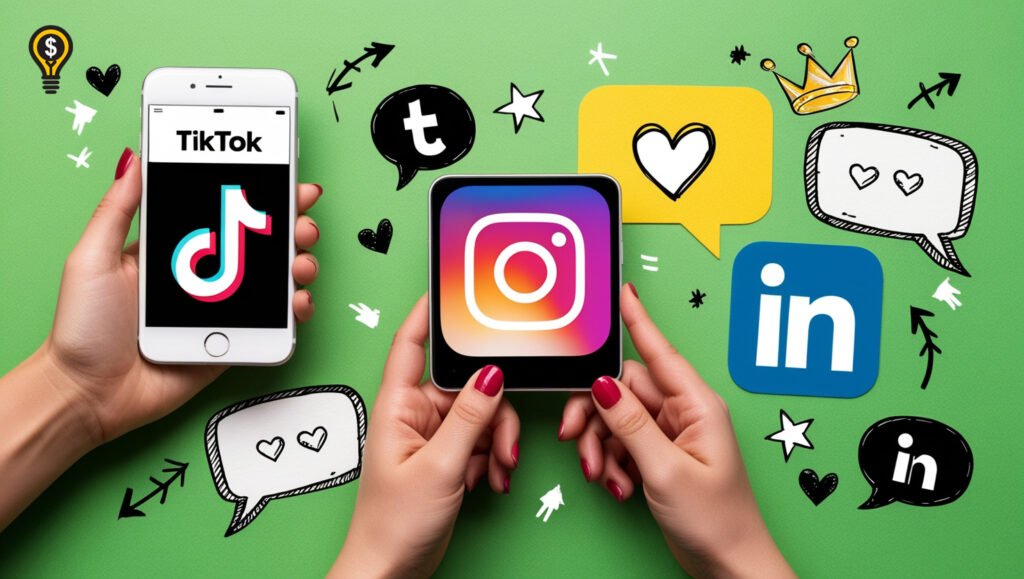
When it comes to social media marketing, many businesses have common questions. Understanding these key concepts can help you make informed decisions and enhance your social media strategy. Here are some frequently asked questions along with detailed answers:
1. What is social media marketing?
Social media marketing involves using social media platforms to promote products or services, engage with customers, and build brand awareness. It encompasses creating and sharing content, running ads, and interacting with followers to foster community and drive traffic to your website.
2. Why use social media for marketing?
Social media provides a vast audience and unique opportunities for engagement. Here are a few reasons to consider:
- Widespread Reach: Billions of users globally offer a massive potential audience for your brand.
- Direct Engagement: Social media allows for real-time interactions, enabling brands to connect with customers on a personal level.
- Cost-Effective Advertising: Many platforms offer affordable advertising options, making it accessible for businesses of all sizes.
- Brand Loyalty: Engaging content can foster a community around your brand, enhancing customer loyalty and retention.
3. Which platform is best for promoting my product?
The best platform depends on your target audience and the nature of your products. Here’s a quick guide:
- Facebook: Great for diverse audiences and various content types.
- Instagram: Ideal for visually appealing brands, especially in fashion, beauty, and lifestyle.
- LinkedIn: Best for B2B marketing and professional services.
- Twitter: Useful for real-time engagement and trending topics.
- TikTok: Excellent for brands targeting younger demographics with creative, short-form content.
4. What are the social media marketing services we offer?
Our social media marketing services include:
- Content Creation: Developing engaging posts, images, and videos tailored to your brand.
- Social Media Management: Managing your profiles, posting content, and engaging with your audience.
- Advertising Campaigns: Running targeted ad campaigns to reach specific demographics.
- Analytics and Reporting: Monitoring performance and providing insights to refine your strategy.
- Community Management: Responding to comments and messages to build relationships with followers.
5. Is social media marketing beneficial for every type of business?
Yes, social media marketing can be beneficial for almost any type of business. The key is to identify the right platforms and tailor your content to your target audience. Even B2B companies can thrive on platforms like LinkedIn by sharing industry insights and connecting with professionals.
6. Is social media marketing cost-effective?
Social media marketing can be very cost-effective, especially compared to traditional advertising. You can start with minimal investment by creating organic content and gradually scale your advertising budget based on results. Many platforms also offer flexible pricing options to suit different budgets.
7. How often should we post on social media?
The optimal posting frequency varies by platform and audience. Generally, here are some guidelines:
- Facebook: 1-2 times per day
- Instagram: 1-3 times per day
- Twitter: 3-5 times per day
- LinkedIn: 1-2 times per week
- TikTok: 1-2 times per day
It’s essential to monitor engagement and adjust your frequency based on audience response.
8. What content should we post on social media?
Your content should reflect your brand identity and engage your audience. Consider the following types of content:
- Educational Posts: Share tips, how-tos, and industry insights.
- Promotional Content: Highlight products, services, and special offers.
- User-Generated Content: Encourage customers to share their experiences with your brand.
- Behind-the-Scenes: Showcase your company culture and processes to build transparency.
- Interactive Content: Use polls, quizzes, and contests to engage your audience.
9. How do we measure the success of our social media efforts?
To measure success, track key performance indicators (KPIs) such as:
- Engagement Rate: Likes, comments, and shares relative to your audience size.
- Reach and Impressions: How many people see your content and how often.
- Follower Growth Rate: The speed at which your audience is expanding.
- Conversion Rate: The percentage of users who take desired actions after engaging with your posts.
Regularly analyse these metrics to assess your strategy and make necessary adjustments.
10. How can we improve our social media marketing strategy?
Improving your strategy involves:
- Analysing Performance: Regularly review your analytics to identify what works and what doesn’t.
- Experimenting with Content: Try different formats, messaging, and posting times to see what resonates with your audience.
- Staying Updated: Keep an eye on industry trends and platform changes to adapt your strategy accordingly.
- Gathering Feedback: Engage with your audience and solicit their input to understand their preferences better.
Elevating Your Social Media Marketing Strategy
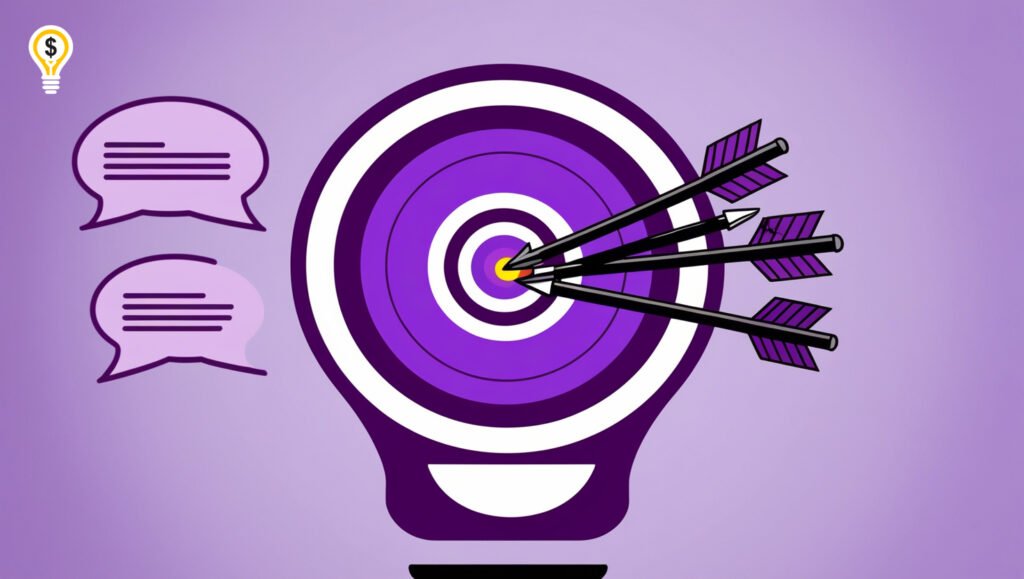
As we wrap up our exploration of social media marketing packages, it’s essential to recognize the significant impact a well-structured strategy can have on your business. In today’s digital landscape, social media is not just an optional marketing tool; it’s a vital component for brands looking to connect, engage, and thrive. Here’s a summary of the key takeaways and final thoughts on how to elevate your social media marketing strategy.
1. The Power of Customization
A one-size-fits-all approach rarely works in marketing. Custom social media strategies allow you to tailor your efforts to your specific audience, goals, and brand identity. By understanding your audience’s preferences and behaviours, you can create content that resonates and fosters engagement. Invest time in developing a unique strategy that aligns with your business objectives and sets you apart from competitors.
2. Data-Driven Decision Making
Measuring success through key performance indicators (KPIs) is crucial. Utilise analytics tools to track engagement, reach, and conversion rates. Regular reporting and analysis help you identify what’s working and what isn’t, allowing for data-driven adjustments to your strategy. Embrace a mindset of continuous improvement, where feedback and insights guide your marketing decisions.
3. Engagement is Key
Social media is fundamentally about connection. Engaging with your audience through interactive content, responding to comments, and encouraging user-generated content can strengthen relationships and build brand loyalty. Remember, social media is a two-way street; listen to your audience and foster meaningful conversations.
4. Stay Current and Agile
The digital landscape is constantly evolving, with new trends and platforms emerging regularly. Staying informed about industry changes, consumer preferences, and technological advancements will help you adapt your strategy to remain relevant. Be prepared to pivot and experiment with new ideas, formats, and channels to keep your content fresh and engaging.
5. Leverage Paid Advertising Wisely
While organic reach is valuable, paid advertising can significantly enhance your visibility and engagement. Invest in targeted ads that align with your audience’s interests and demographics. Experiment with different ad formats and campaigns to see what yields the best results, and continuously optimise based on performance data.
6. Education and Training
Empowering your team with the knowledge and skills needed to execute an effective social media strategy is vital. Consider investing in training or workshops that cover best practices, emerging trends, and tools. A well-informed team can create high-quality content and respond effectively to audience needs.
7. Building a Community
Ultimately, social media marketing is about building a community around your brand. Encourage your audience to interact with your content and each other. Foster a sense of belonging by creating spaces where followers can share their experiences, ask questions, and engage in discussions. A strong community can amplify your brand’s reach and influence.
Final Thoughts
an effective social media marketing strategy is a blend of creativity, analytics, and genuine engagement. By customising your approach, leveraging data, and actively engaging with your audience, you can create a powerful social media presence that drives growth and success for your business. As you embark on or refine your social media journey, remember that the landscape is dynamic, and staying adaptable will be key to your ongoing success. Embrace the opportunities that social media offers, and watch your brand flourish in the digital age.
Additional Resources for Social Media Marketing Success
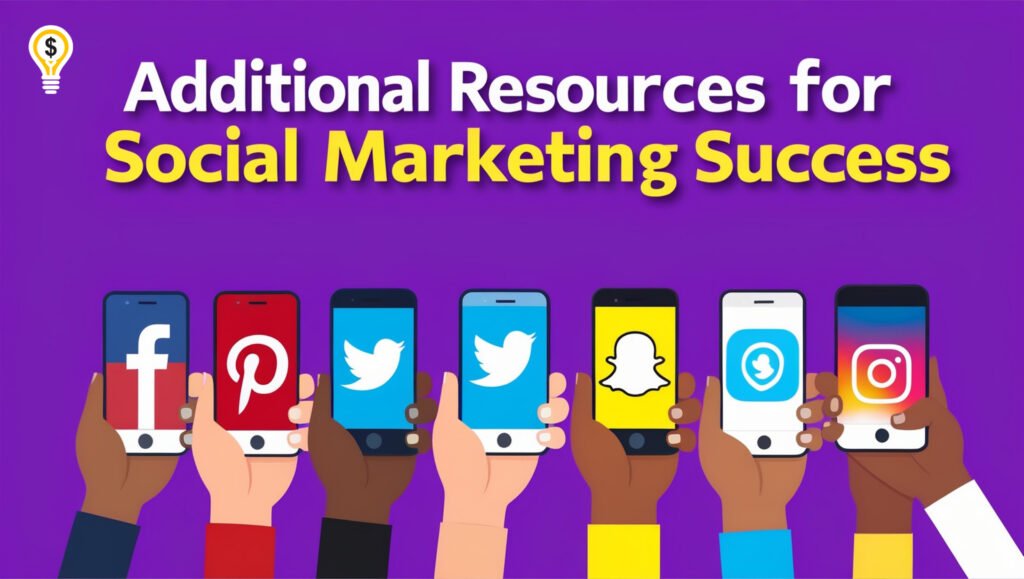
To maximise your social media marketing efforts, leveraging additional resources can provide valuable insights, tools, and support. Here’s a comprehensive list of resources to help you stay informed, improve your strategies, and effectively engage your audience.
1. Educational Blogs and Websites
Staying updated on industry trends and best practices is essential. Consider following these reputable blogs and websites:
- HubSpot Blog: Offers in-depth articles on social media strategies, marketing tips, and analytics.
- Buffer Blog: Focuses on social media marketing insights, case studies, and practical guides.
- Sprout Social Insights: Provides research-based articles and tips on effective social media management.
- Social Media Examiner: Offers the latest news, trends, and expert interviews in the social media landscape.
2. Online Courses and Certifications
Investing in education can deepen your understanding of social media marketing. Here are some platforms offering valuable courses:
- Coursera: Features courses from leading universities on digital marketing and social media strategies.
- Udemy: Offers a variety of affordable courses on specific social media platforms and marketing techniques.
- LinkedIn Learning: Provides professional development courses focused on social media marketing and analytics.
- Hootsuite Academy: Offers free and paid courses on social media management, strategy, and certification programs.
3. Analytics and Management Tools
Utilising the right tools can streamline your social media efforts and enhance your analytics capabilities. Consider these popular options:
- Hootsuite: A comprehensive social media management tool that allows you to schedule posts, monitor engagement, and analyse performance across multiple platforms.
- Sprout Social: Offers robust analytics, scheduling, and social listening features to help you optimise your strategy.
- Buffer: Simple scheduling and analytics tool that allows you to manage multiple social media accounts efficiently.
- Google Analytics: Essential for tracking website traffic from social media and understanding user behaviour.
4. Social Media Advertising Resources
If you’re exploring paid advertising, these resources can guide you through creating effective campaigns:
- Facebook Blueprint: A free online training platform offering courses on Facebook and Instagram advertising.
- Google Ads Help Center: Comprehensive resources for understanding Google Ads and running successful campaigns.
- Twitter Flight School: Provides training on Twitter advertising and best practices for campaign management.
- LinkedIn Marketing Solutions: Offers resources and tips specifically for advertising on LinkedIn.
5. Community and Networking
Joining communities and networking with peers can provide support and insights. Consider these platforms:
- Facebook Groups: Look for groups focused on social media marketing, where members share experiences and advice.
- LinkedIn Groups: Join professional groups to connect with other marketers and share best practices.
- Reddit: Subreddits like r/social media and r/marketing provide forums for discussion and knowledge sharing.
- Meetup: Look for local events or groups focused on digital marketing and social media to network in person.
6. Podcasts and Webinars
Listening to experts can provide fresh perspectives and insights. Here are some recommended podcasts and webinars:
- Social Media Marketing Podcast: Hosted by Michael Stelzner, this podcast features interviews with industry experts on various social media topics.
- Marketing Over Coffee: A weekly podcast discussing marketing trends, tools, and social media strategies.
- Webinars from Social Media Examiner: Regular webinars cover a range of social media marketing topics, featuring industry leaders.
- HubSpot Webinars: Offers webinars on various marketing topics, including social media, inbound marketing, and more.
7. Books on Social Media Marketing
Reading books by industry experts can deepen your understanding of social media marketing strategies. Here are a few highly regarded titles:
- “Jab, Jab, Jab, Right Hook” by Gary Vaynerchuk: A guide on how to tell your story in a noisy social media world.
- “Crushing It!” by Gary Vaynerchuk: Insights into building a personal brand on social media.
- “Contagious: How to Build Word of Mouth in the Digital Age” by Jonah Berger: Explores what makes content go viral and how to create shareable material.
- “Social Media Marketing Workbook” by Jason McDonald: A practical guide with exercises for creating an effective social media marketing strategy.
.
Getting Started with Your Social Media Marketing Package
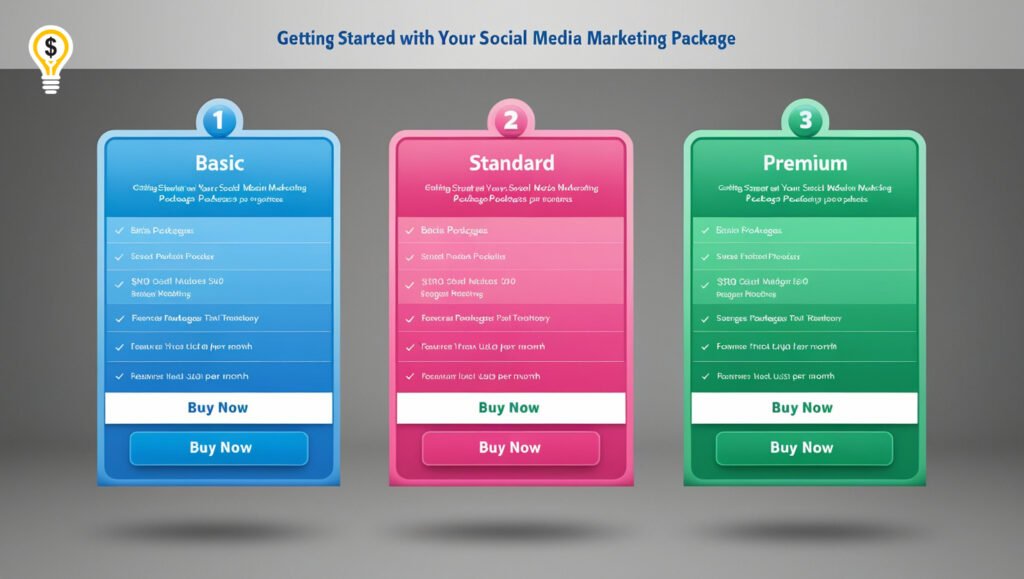
Embarking on a social media marketing journey can feel overwhelming, but breaking it down into actionable steps will help you get started effectively. Whether you’re launching a new campaign or optimising an existing one, following these steps can guide you toward success in leveraging your social media marketing package.
1. Define Your Goals
Before diving in, it’s crucial to establish clear and measurable goals. Consider what you want to achieve with your social media marketing efforts. Common objectives include:
- Increasing Brand Awareness: Aim to reach more people and grow your audience.
- Driving Website Traffic: Focus on getting users to visit your website.
- Generating Leads: Target potential customers to capture their information.
- Boosting Sales: Set specific sales targets driven by social media campaigns.
Defining your goals will guide your strategy and help measure success.
2. Identify Your Target Audience
Understanding who your audience is will shape your content and engagement strategies. Consider the following:
- Demographics: Analyze age, gender, location, and interests.
- Psychographics: Understand their behaviours, values, and pain points.
- Platform Preferences: Identify which social media platforms your target audience uses most frequently.
Creating detailed buyer personas can help you visualise and tailor your content to meet their needs effectively.
3. Choose the Right Social Media Platforms
Not all social media platforms will be suitable for your brand. Select the platforms where your audience is most active. Here’s a quick guide:
- Facebook: Ideal for a broad audience; great for community building and content sharing.
- Instagram: Perfect for visually appealing brands, especially in fashion, food, and lifestyle.
- LinkedIn: Best for B2B companies and professional services.
- Twitter: Effective for real-time engagement and customer service.
- TikTok: Excellent for brands targeting younger audiences with creative video content.
Focus on 2-3 platforms initially to maximise your resources.
4. Develop a Content Strategy
Content is the backbone of social media marketing. Your strategy should outline:
- Content Types: Determine the mix of content you’ll create, such as posts, videos, stories, and polls.
- Content Themes: Identify key themes or topics that align with your brand and audience interests.
- Posting Frequency: Set a consistent schedule for posting to maintain audience engagement. Use the guidelines mentioned in section 8 to determine how often to post on each platform.
5. Create Engaging Content
Develop high-quality, engaging content that resonates with your audience. Consider these tips:
- Visual Appeal: Use eye-catching images, graphics, and videos to capture attention.
- Authenticity: Be genuine and relatable in your messaging. Share behind-the-scenes content and customer stories.
- Call to Action (CTA): Encourage your audience to take action, whether it’s liking, sharing, or visiting your website.
Use tools like Canva or Adobe Spark to create visually appealing graphics.
6. Schedule and Automate Posts
Utilising social media management tools can save you time and ensure consistent posting. Consider tools like:
- Hootsuite: Schedule posts across multiple platforms in advance.
- Buffer: Plan and automate your content for easy management.
- Later: Focuses on visual planning and scheduling for Instagram.
Consistent posting helps maintain engagement and keeps your brand top-of-mind for your audience.
7. Engage with Your Audience
Social media is about building relationships. Actively engage with your followers by:
- Responding to Comments and Messages: Show appreciation for feedback and answer questions promptly.
- Participating in Conversations: Join discussions relevant to your industry and audience interests.
- Encouraging User-Generated Content: Invite your audience to share their experiences with your brand. This not only fosters community but also provides authentic content for your channels.
8. Monitor and Analyze Performance
Regularly tracking your social media performance is key to understanding what works and what doesn’t. Focus on:
- KPIs: Monitor engagement rates, reach, website traffic, and conversions as outlined in section 8.
- Platform Analytics: Use built-in analytics tools to gauge the performance of your posts and campaigns.
- Adjustments: Be prepared to adjust your strategy based on the insights gathered. If a particular type of content performs well, create more of it.
9. Invest in Paid Advertising (if applicable)
Consider allocating part of your budget for paid advertising to amplify your reach. Start with:
- Boosted Posts: Increase the visibility of high-performing organic posts.
- Targeted Ads: Use detailed targeting options on platforms like Facebook and Instagram to reach specific demographics.
- Monitor ROI: Track the performance of your ads to ensure a positive return on investment.
10. Stay Informed and Adapt
The social media landscape is always changing. Keep yourself updated on the latest trends, platform changes, and new features. Participate in webinars, follow industry leaders, and engage with communities to stay ahead of the curve.
Frequently Asked Questions About Social Media Marketing Packages
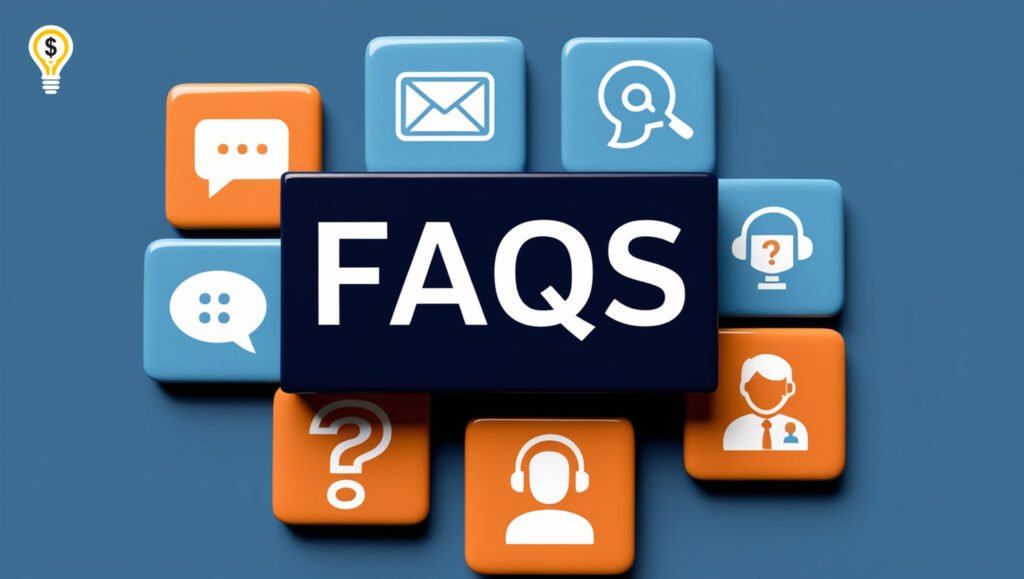
Understanding social media marketing packages can be complex, especially for businesses new to the digital landscape. This section aims to address common questions and concerns to help you navigate your social media marketing journey effectively.
1. What is a social media marketing package?
A social media marketing package is a bundled set of services designed to help businesses manage their social media presence. These packages typically include content creation, post scheduling, analytics, engagement strategies, and advertising support. They cater to various needs and budgets, allowing businesses to choose a package that aligns with their marketing goals.
2. Why should I invest in a social media marketing package?
Investing in a social media marketing package can streamline your marketing efforts and provide access to expertise and resources that may not be available in-house. These packages can help you:
- Save time on content creation and management.
- Reach a broader audience through targeted campaigns.
- Increase engagement with your audience.
- Track performance and adjust strategies based on data insights.
3. How do I choose the right social media marketing package?
When selecting a package, consider the following:
- Your Goals: Define what you want to achieve (e.g., brand awareness, lead generation).
- Budget: Determine how much you can invest in social media marketing.
- Services Needed: Assess whether you need comprehensive management, content creation, or just analytics support.
- Experience Level: Choose a package that matches your team’s expertise. Beginners may benefit from more comprehensive packages with guidance.
4. What platforms are typically included in social media marketing packages?
Most packages offer support for popular social media platforms, including:
- Facebook: Ideal for community building and content sharing.
- Instagram: Focuses on visual content and engagement.
- Twitter: Great for real-time communication and updates.
- LinkedIn: Best for B2B marketing and professional networking.
- TikTok: Emerging platform for creative video content aimed at younger audiences.
Packages may vary in the number of platforms included, so review the details carefully.
5. What kind of content will be created for my business?
The type of content developed will depend on your brand, audience, and marketing goals. Common content types include:
- Images and Graphics: Eye-catching visuals to enhance engagement.
- Videos: Short clips, tutorials, or behind-the-scenes looks at your business.
- Blog Posts: Articles that provide value to your audience and establish authority.
- Polls and Surveys: Interactive content that encourages audience participation.
Your marketing partner should collaborate with you to ensure the content aligns with your brand’s voice and objectives.
6. How often will my content be posted?
Posting frequency can vary based on your strategy and the specific package you choose. Common practices include:
- Daily Posts: Typically effective for platforms like Twitter and Instagram.
- Several Posts per Week: Ideal for Facebook and LinkedIn to maintain engagement without overwhelming your audience.
- Weekly Updates: Suitable for platforms that focus on in-depth content, like blogs or LinkedIn articles.
Discuss your preferred posting schedule with your marketing team to ensure it aligns with your goals.
7. How will I know if the marketing package is working?
To measure the effectiveness of your social media marketing package, you should track key performance indicators (KPIs), such as:
- Engagement Rate: Likes, shares, and comments on your posts.
- Follower Growth: The increase in your audience size over time.
- Website Traffic: Monitoring the number of visitors referred from social media.
- Conversion Rates: The percentage of users who complete desired actions, like signing up for a newsletter or making a purchase.
Regular reporting from your marketing partner will provide insights into these metrics, allowing you to assess performance.
8. What if I want to customise my package?
Many marketing agencies offer customizable packages to better suit your specific needs. If you require additional services or modifications, communicate your preferences with the agency. Customization can include:
- Adding specific platforms.
- Increasing content creation frequency.
- Including additional services, such as SEO or email marketing.
Discuss your goals and budget to create a tailored solution that works for you.
9. Is social media marketing effective for all types of businesses?
While social media marketing can benefit a wide range of industries, its effectiveness depends on factors like target audience and platform suitability. Businesses in B2C sectors (like retail and hospitality) often see immediate engagement, while B2B companies may need to focus more on relationship-building through platforms like LinkedIn.
Evaluate your target audience and business objectives to determine if social media marketing aligns with your overall strategy.
10. How do I get started with my social media marketing package?
To get started, follow these steps:
- Define Your Goals: Know what you want to achieve.
- Choose a Package: Select a package that fits your needs and budget.
- Communicate with Your Marketing Partner: Share your brand information, goals, and any specific requirements.
- Collaborate on Strategy: Work together to develop a content plan and posting schedule.
- Monitor Performance: Stay engaged with reports and adjust strategies as needed.
Starting your social media marketing journey with a clear plan will set the stage for success.
addressing these frequently asked questions, we hope to clarify the role and benefits of social media marketing packages. Whether you’re new to social media marketing or looking to refine your strategy, understanding these key concepts will empower you to make informed decisions and optimise your approach for maximum impact. Embrace the journey and leverage the resources available to elevate your brand’s presence in the digital space.
Conclusion: Elevating Your Business Through Social Media Marketing Packages

As we wrap up our exploration of social media marketing packages, it’s essential to recognize their critical role in modern business strategies. In an increasingly digital world, having a strong social media presence is not just an option; it’s a necessity for businesses of all sizes. Here’s a recap of key points to consider and actionable steps to take as you move forward.
1. The Importance of Social Media Marketing
Social media platforms are powerful tools for engaging with your audience, building brand awareness, and driving sales. With billions of active users worldwide, social media provides unparalleled access to potential customers. By harnessing the power of social media marketing, you can connect with your audience on a personal level, foster loyalty, and drive conversions.
2. Choosing the Right Package
Selecting the right social media marketing package is crucial. Take the time to assess your business goals, target audience, and budget. Whether you need a basic package for brand awareness or a comprehensive solution for lead generation, there’s a package tailored to your needs. Don’t hesitate to customise your package to ensure it aligns perfectly with your marketing strategy.
3. Developing a Solid Strategy
A well-thought-out social media strategy is the backbone of effective marketing. Focus on creating engaging content that resonates with your audience. Monitor your posting frequency, utilise analytics to refine your approach, and stay updated on industry trends. Engaging with your audience is just as important as posting content; responding to comments and fostering discussions will help build a community around your brand.
4. Utilising Resources and Support
Leverage the wealth of resources available to you, from educational blogs and online courses to analytics tools and community support. Continuous learning is vital in the ever-evolving landscape of social media marketing. Stay informed about new features, algorithms, and best practices to keep your strategy fresh and effective.
5. Measuring Success
Regularly evaluate your social media performance using key metrics. Understanding what works and what doesn’t will allow you to adjust your strategies effectively. Engage in A/B testing for your posts and ads to find the best approach for your audience. This data-driven decision-making will empower you to enhance your marketing efforts continually.
6. Commit to Ongoing Improvement
Social media marketing is not a one-time effort; it’s an ongoing process. Be prepared to adapt your strategies based on performance insights and industry changes. Stay agile and open to experimenting with new content types, platforms, and engagement tactics. The digital landscape is dynamic, and your ability to pivot will keep your brand relevant and engaging.
Call to Action
Now is the time to take action! If you haven’t already, evaluate your current social media strategy and explore the packages available to you. Consider starting a conversation with a marketing agency that aligns with your business values and goals. By investing in social media marketing, you’re not just promoting your products or services; you’re building a long-term relationship with your audience that can lead to sustained growth and success.
In conclusion, social media marketing packages offer valuable tools and expertise to elevate your brand’s presence online. By following the steps outlined in this article, you can create a robust social media strategy that resonates with your audience and drives meaningful results. Embrace the potential of social media marketing, and watch your business thrive in the digital age
In conclusion
Social media marketing packages are essential tools for businesses aiming to enhance their online presence and engage effectively with their audience. By selecting the right package tailored to your goals, developing a solid strategy, and continuously measuring your success, you can harness the power of social
media to drive brand awareness, generate leads, and foster lasting customer relationships. Embrace the dynamic nature of social media, stay informed about industry trends, and be open to adapting your approach. With commitment and the right resources, your business can thrive in the digital landscape, unlocking new opportunities for growth and success. Now is the time to take action and elevate your social media marketing efforts to new heights!








